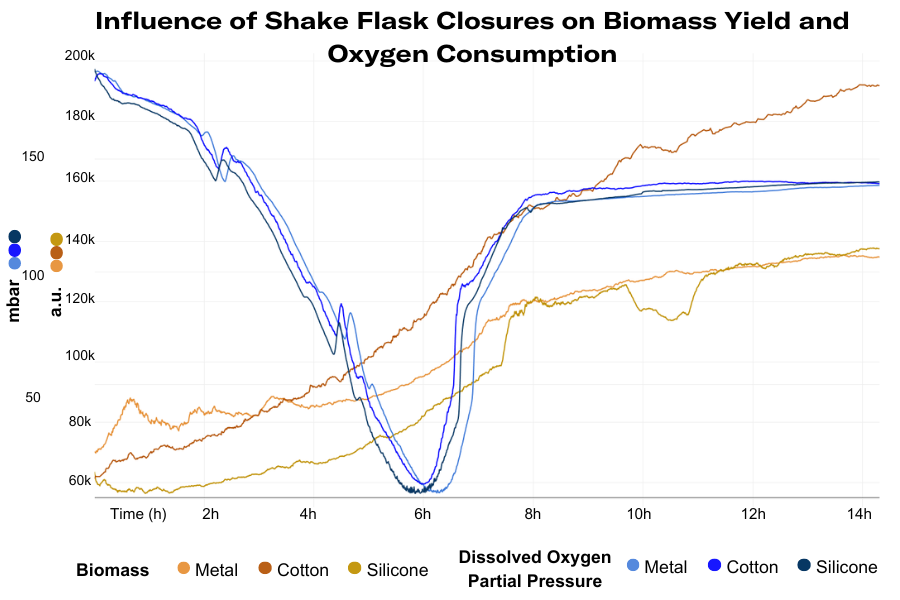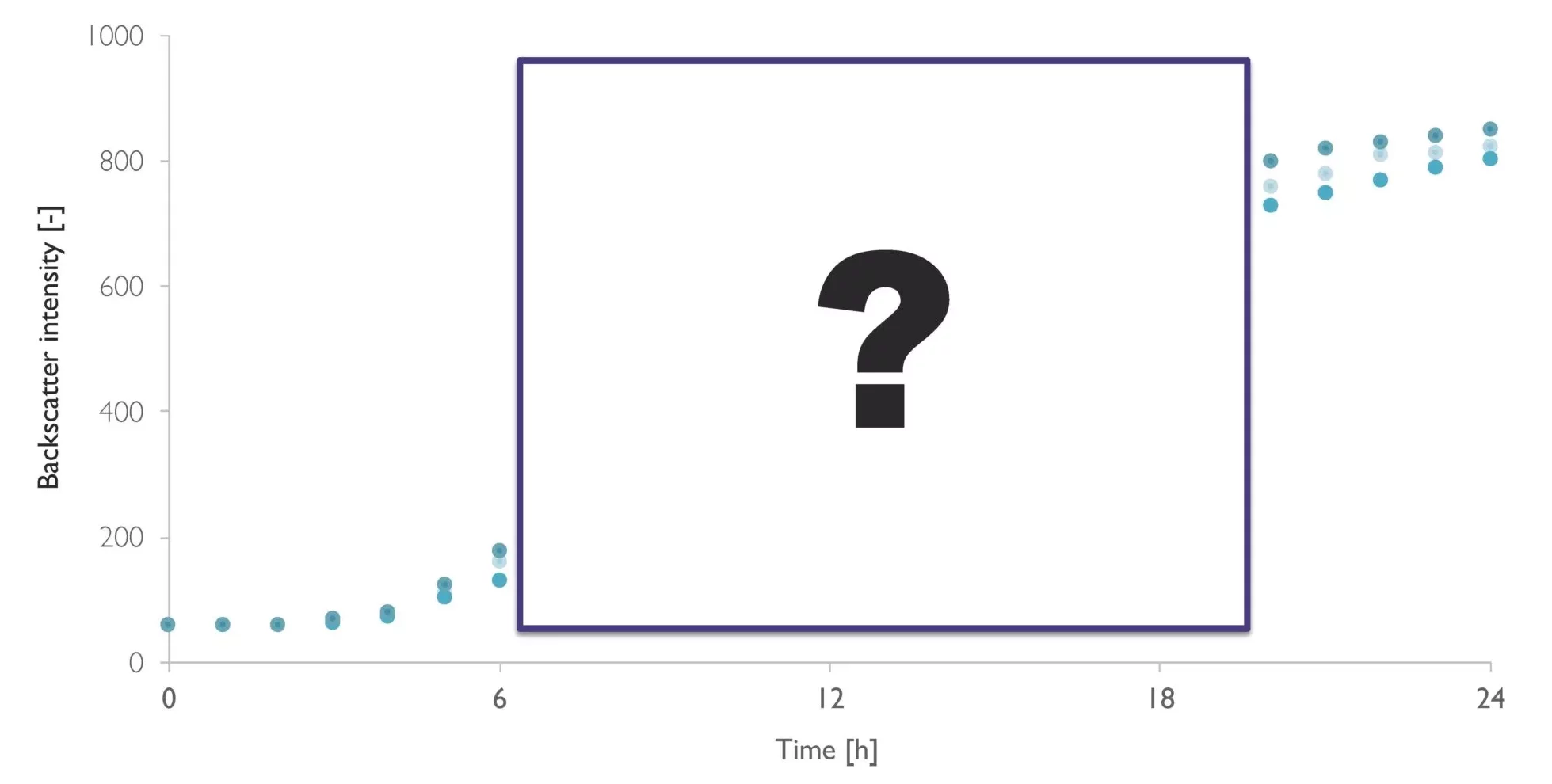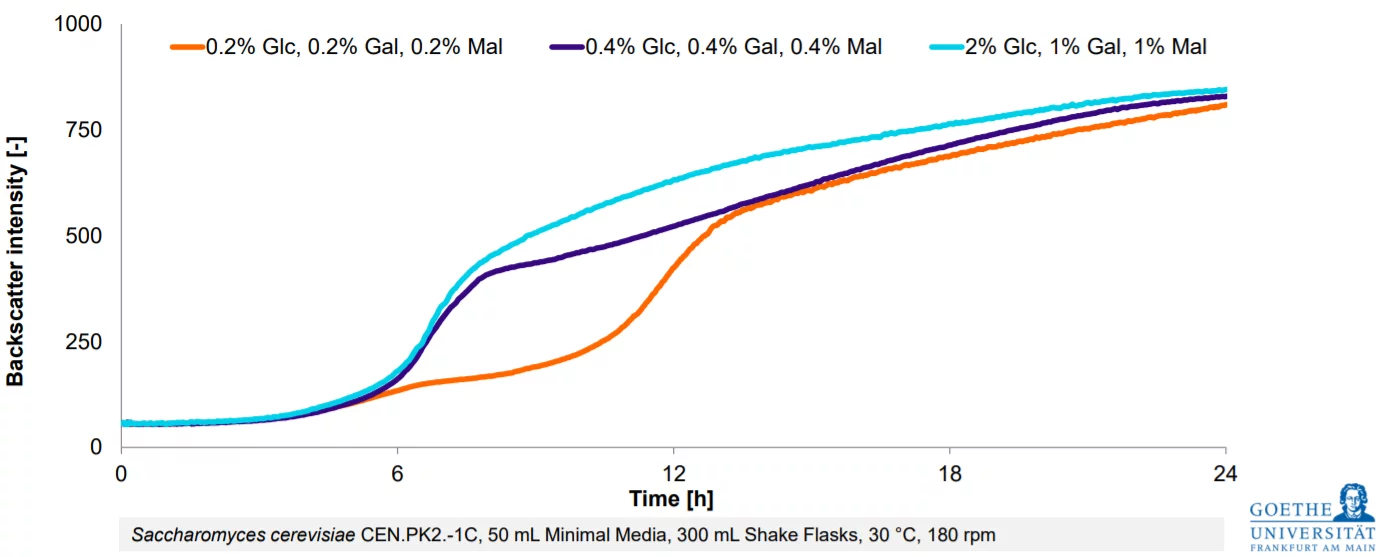Data Spotlight
Influence of Shake Flask Closures on Biomass Yield and Oxygen Consumption in E. coli Cultures
Background
The choice of closure is essential, as it impacts the rate of oxygen entering the flask and thus impacts oxygen-dependent cellular events like biomass production. Historically, cotton plugs have been used for covering shake flasks due to their ease and low cost while offering high oxygen transfer into one's culture. While having these advantages, they are also known to have higher contamination risks than the more advanced closure types, such as silicone.
It is important for any bioprocess design to balance ease of use, cost, and the need for optimal growth conditions while presenting only a minimal risk to the cells.

Cultures are grown under the same conditions while being closed with different types of conventional lids to test if these different types of closure influence microbial growth and oxygen consumption of E. coli eGFP Gold.
Materials & Methods
Cultures were performed on LB medium in 250 mL Erlenmeyer shake flasks with a filling volume of 10% and shaken at 24°C and 200 rpm. All cultures grew under the same conditions. Three closures types were tested: metal cap, sterilized cotton ball, and silicone. Dissolved oxygen (DO) and biomass measurement under standard settings were analyzed by the Multi-Parameter Sensor (MPS) and Dissolved Oxygen Sensor Pills.
Conclusion
There was a slight variation in dissolved oxygen levels between the three closure types of the shake flasks under 10% filling volume. Despite this minor variation in the levels of dissolved oxygen, the biomass concentration of flasks closed with cotton balls is slightly higher than those closed by a metal cap or silicone. Therefore, it is essential to understand the different factors involved during closure selection to that the objectives of the designed bioprocess can be achieved with the assurance of providing ideal conditions for growth and minimal risk for the culture.
From Estimation To High-Resolution Growth Curves


Customer Success Stories
.png)
-Kitana Manivone Kaiphanliam (Washington State University)

